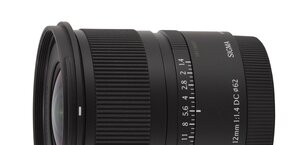Canon EF 70-200 mm f/2.8L IS II USM
8. Vignetting

Our measurements confirm that statement. At the shortest focal length the vignetting would be hard to notice even at the maximum relative aperture because it amounts to 12% (-0.37 EV). On stopping down to f/4.0 the problem becomes marginalized completely because it decreases to 4%. If we move toward the middle of the focal range the situation is similar – by f/2.8 the vignetting is 15% (-0.42 EV) and by f/4.0 only 5%.
Please Support UsIf you enjoy our reviews and articles, and you want us to continue our work please, support our website by donating through PayPal. The funds are going to be used for paying our editorial team, renting servers, and equipping our testing studio; only that way we will be able to continue providing you interesting content for free. |
- - - - - - - - - - - - - - - - - - - - - - - - - - - - - - - - - - - - - - - - - - - - - - - -
On the APS-C sensor the chances are we can notice the vignetting at the maximum focal length. By f/2.8 it amounts to 22% (-0.72 EV) but on stopping down the aperture by 1 EV it decreases to an imperceptible level of 10%. After attaching the converter, contrary to the Sigma 70-200 mm OS, we see the situation improving. The vignetting by f/4.0 reaches 14% and it disappears almost completely by f/5.6 where its level is just 4%.
Full frame demands a lot from a lens. Can the Canon perform there up to scratch? Let’s look at the thumbnails below.

At the shortest focal length the problems are small if they occur at all. At the maximum relative aperture the brightness loss in the frame corners reaches 28% (-0.95 EV) which is a noticeable value but not especially bothersome. Especially that on stopping down to f/4.0 the vignetting decreases to 13% and by f/5.6 it is just 7%.
The problems become more pronounced at 135 mm. There, by f/2.8, we deal with the vignetting on the level of 36% (-1.31 EV). On stopping down the aperture to f/4.0 and f/5.6 we see this aberration decrease to the values of 22% and 17% respectively. Only after using f/8.0 aperture the problem disappears completely.
The sharpest decrease of the brightness in the frame corners we observe at 200 mm. After applying the maximum relative aperture the vignetting reaches 39% (-1.43 EV) and on stopping down the lens to f/4.0 this aberration decreases to the level of 23%. By f/5.6 we deal with still noticeable level of 16% and only by f/8.0 there are no further problems.
After attaching the original Canon TC 1.4x converter the vignetting at the maximum relative aperture amounts to 32% (-1.1 EV) and it decreases to a very slight value of 12% by f/5.6.
In this category the Canon lens fares significantly better than the rival Sigma. It is worse, though, than the Nikkor 70-200 mm f/2.8 VR II which had results by several percent better.
 |
 |
 |
 |






